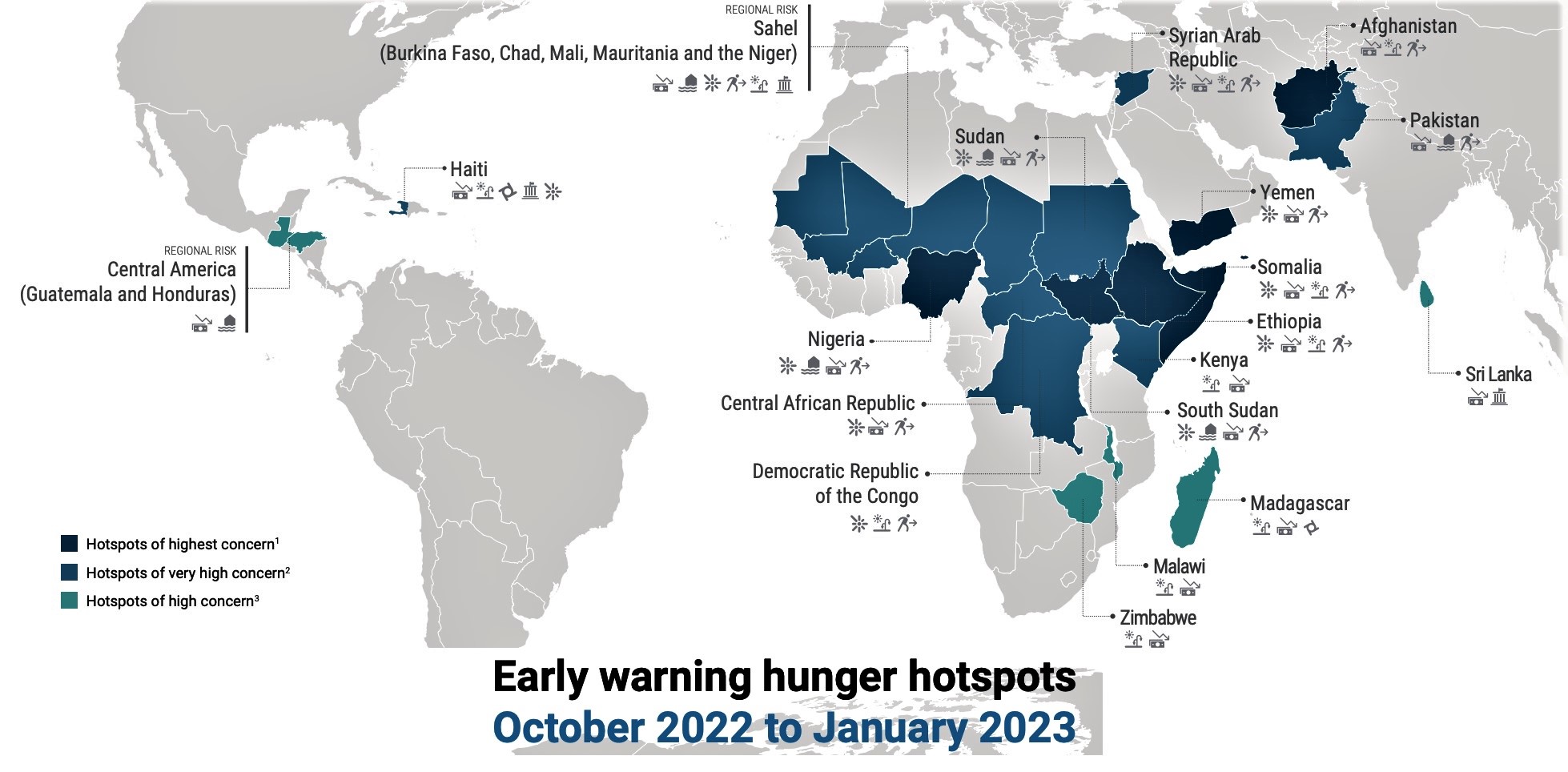The Hunger Hotspots Outlook (2022-23) that was released recently has issued warnings on acute food insecurity.
The United Nations’ (UN) Hunger report defines hunger as “periods when populations are experiencing severe food insecurity.”
According to the 2022 Global Hunger Index, 44 countries are suffering with serious or alarming levels of hunger.

The United Nations Sustainable Development Goal 2 targets to end hunger by 2030.
Better production
Better nutrition
Better environment
Better life
Somalia is the world’s hungriest country as of 2022.
An International Monetary Fund paper asserted that extreme poverty was maintained below 1% in 2020 due to Pradhan Mantri Garib Kalyan Anna Yojana (PMGKAY).
References
Quick facts
The Global Report on Food Crises
The Global Network
Millets